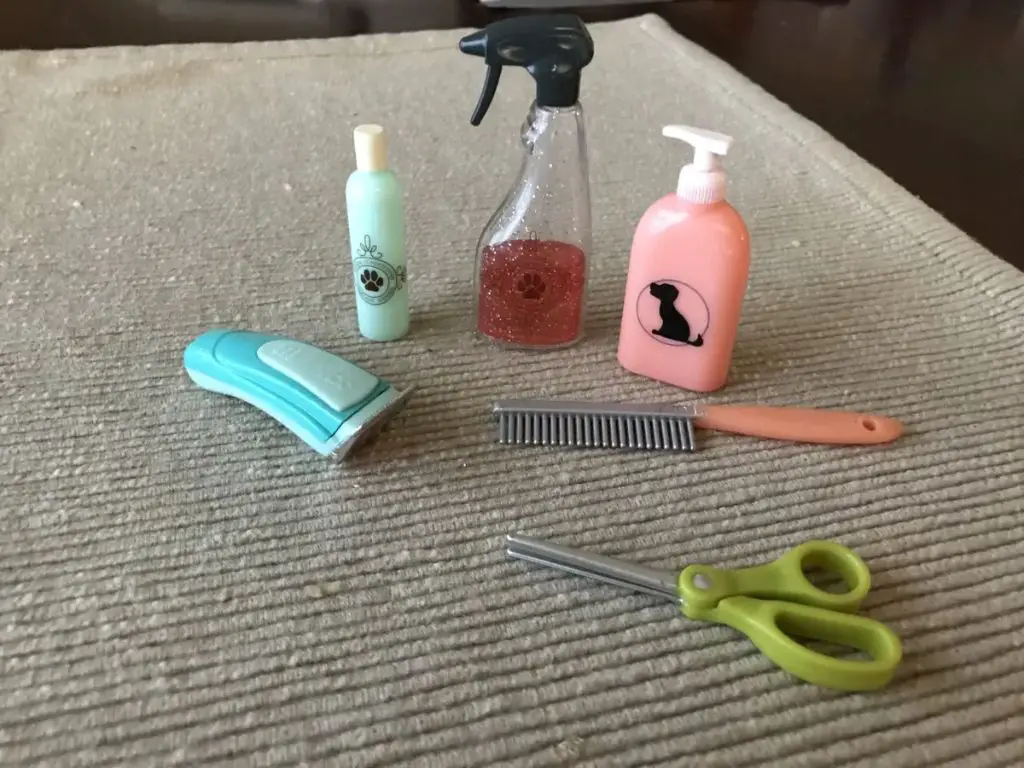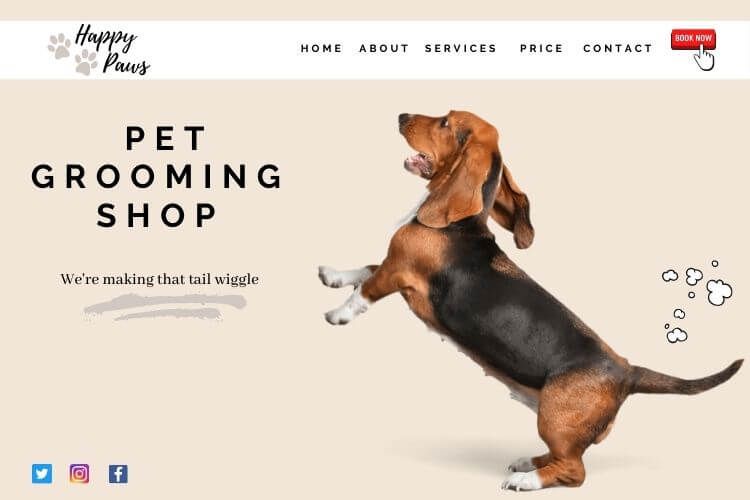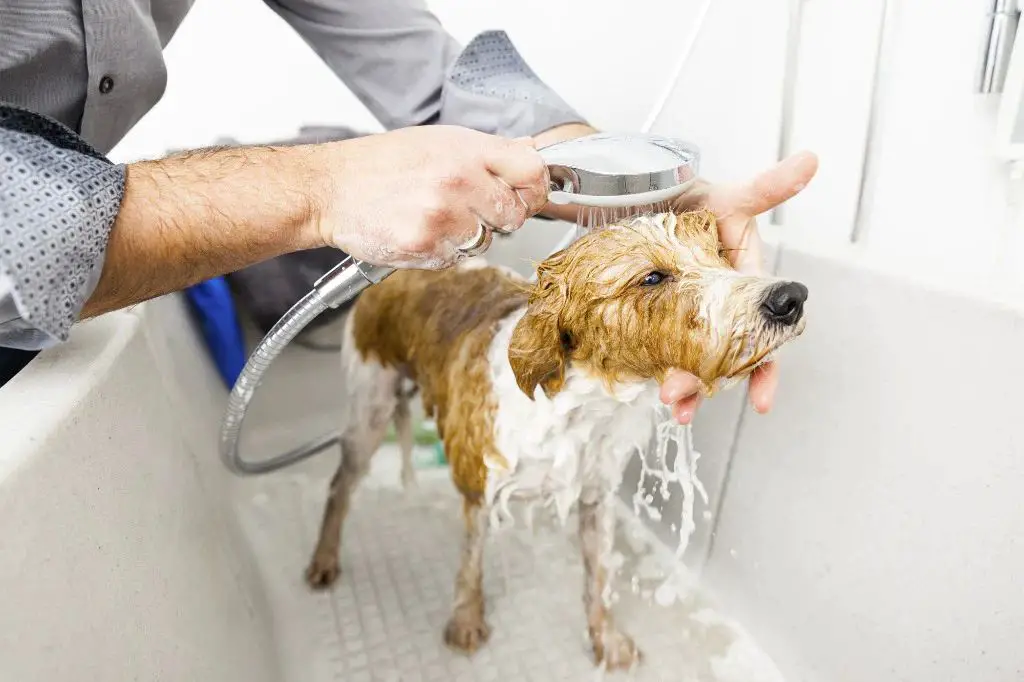Average Salary for Dog Groomers
Dog groomers can earn a wide range of salaries depending on their experience, location, and whether they work independently or for a larger company. The average national salary for dog groomers is around $30,000 per year. However, salaries can range from under $20,000 for entry level positions to over $50,000 for experienced groomers running their own successful businesses.
There are significant regional differences in dog groomer pay as well. In high cost of living areas like New York and California, average salaries tend to be $35,000 or more. In lower cost cities and rural areas, dog groomers may only earn $25,000 annually. Independent shop owners and mobile groomers in busy metropolitan areas can make $60,000-75,000 or even six figures after building up their clientele.
Franchise dog grooming businesses tend to pay less than independent shops, averaging around $25,000-30,000. But they offer more structure, training, benefits, and job security for employees. Independent shop owners have higher earning potential but also assume all the risk and responsibilities of running a small business. With hard work and savvy marketing, independent dog grooming businesses can be quite lucrative in the right location.
Factors That Influence Earnings
There are several factors that impact how much a dog groomer can potentially earn:
Experience level – Dog groomers with more experience and skill typically charge higher prices and earn more. Entry-level groomers may start around minimum wage, while highly experienced groomers with years in the business can earn $40,000-60,000+ per year.

Location – There is geographic variation in earnings. Groomers working in major metro areas and affluent neighborhoods can earn more compared to rural areas due to higher demand and cost of living.
Number of dogs serviced – Groomers able to handle more dogs per day and maximize their schedule will increase their earning potential. Quickly and efficiently grooming each dog is key.
Types of services offered – The more specialty, premium services a groomer provides (e.g. hair dyeing, teeth cleaning, nail trimming), the more they can charge per service. Offering a breadth of services expands earning potential.
Operating independently vs as a franchise – Independent groomers keep all their revenue but also have higher expenses. Those working for national chains sacrifice some earning potential for benefits and support.
Costs of Operating a Dog Grooming Business
Operating a successful dog grooming business requires covering ongoing costs for equipment, supplies, rent, insurance, licensing, and staff wages. Properly budgeting for these expenses is crucial for maintaining profitability.
Equipment and supplies represent a significant upfront and ongoing investment. At minimum, you’ll need clippers, scissors, brushes, shampoo, towels, tables, and drying equipment like stand dryers. Quality tools lead to better results and can justify higher prices. Expect to spend $2,000-$5,000 upfront and budget for continual replacement and restocking.
Rent for physical retail space is another major recurring cost. The location and size of your shop will determine rent prices, which often range from $1,000-$4,000 monthly. You can reduce this by working from home or renting in a less expensive area.
Liability insurance, licenses, and permits are required expenses that provide necessary legal protections. Liability insurance can cost $500-$2,000 annually depending on your location and coverage levels. Local business licenses and pet grooming permits might range from $50-$500 per year.

Staff wages make up a significant portion of expenses. Employees will likely earn $10-$15 per hour, with additional payroll tax and benefit costs. For a team of 2-5 workers, estimate $25,000-$75,000 in annual staffing costs.
Carefully evaluating these costs and choosing affordable options allows dog grooming businesses to keep overhead manageable while still providing quality services.
Pricing for Dog Grooming Services
Setting the right prices for dog grooming services is crucial for running a successful and profitable dog grooming business. There are several factors to consider when determining pricing:
Average Prices Charged Per Service Type
On average, dog groomers charge the following prices in the United States:
- Basic bath and brush: $25-$50
- Haircut: $30-$75
- Full grooming service (bath, brush, haircut, nails): $50-$100
- Luxury package (includes extras like teeth brushing, ear cleaning, etc): $75-$150+
Prices tend to be higher in metropolitan areas and for specialty services like hand-stripping coats or creative styling.
How to Determine Pricing
Consider the following factors when setting prices:
- Labor time and costs – Calculate how long each service takes you and factor in your hourly labor costs.
- Overhead expenses – Account for costs like rent, utilities, equipment, supplies, insurance, etc.
- Desired profit margin – Decide the net income you want to earn from each service after expenses.
- Location and competition – Adjust pricing based on your local market rates.
- Dog size/coat type – Some breeds require more time and effort to groom.
- Add-ons and packages – Offer discounts for multiple services purchased together.
Track your costs closely and adjust pricing periodically to ensure you’re earning adequate profits.
Competition Pricing Factors
Research competitors’ prices in your area to set rates that are aligned with the local market. It’s important to match prices for standard services so you remain competitive. You can offer discounts or premium packages to stand out from competitors. Avoid setting prices drastically lower than competitors just to gain business – this can devalue your services in customers’ eyes. Find the sweet spot where you can attract customers while earning fair pay for your work.
Generating Revenue
To maximize your revenue as a dog groomer, focus on both growing your client base and getting the most from each appointment. Here are some strategies to boost your bottom line:

- Use social media and inexpensive advertising to reach more local pet owners. Highlight your skills and experience to convince them to become clients.
- Offer a referral program so existing clients advertise your services to friends.
- Provide exceptional service so clients want to rebook with you regularly.
- Suggest add-on services like teeth brushing, nail trimming or aromatherapy baths.
- Sell premium shampoos, brushes and other dog grooming retail products.
- Provide ancillary services like self-serve dog washing stations for basic grooming between full appointments.
By bringing in more dogs and maximizing the dollars earned per appointment, dog grooming businesses can significantly increase their top and bottom lines.
Profit Margins
For dog grooming businesses, the average profit margin ranges from 25-40%. This can vary quite a bit depending on factors like location, number of customers, and pricing structures. Operating costs like rent, utilities, equipment, supplies, and labor reduce how much of the revenue translates into profit.
There are several ways dog grooming businesses can aim to improve profitability:
- Increase prices for services while remaining competitive
- Offer package deals or memberships to increase repeat business
- Focus on boosting retention of existing clients
- Reduce costs by negotiating vendor and supplier rates
- Streamline operations and implement technology to optimize workflow
- Hire independent contractors instead of employees to reduce overhead
- Sell retail products like shampoos, toys, treats to generate additional revenue
Monitoring metrics like revenue per dog and profit per customer can help grooming business owners determine optimal pricing and areas to target to enhance the bottom line. Higher capacity utilization and increasing the number of dogs serviced daily also leads to better profitability.
Financing a Dog Grooming Business
Launching a dog grooming business requires significant upfront capital. Depending on the size and scope of your business, you may need $10,000-$150,000 or more to get started. The major costs include:
- Leasing a retail space and renovating it for your needs
- Purchasing professional grooming equipment and supplies
- Buying a customized van or trailer for mobile grooming
- Hiring and training staff
- Licenses, permits, insurance and operating expenses
You have several options for financing the startup costs of a dog grooming business:
- Personal Savings: Saved cash is often the best option since it avoids interest payments. Have 3-6 months of operating expenses saved.
- Loans: Banks and credit unions offer small business loans and lines of credit. SBA loans provide favorable terms.
- Business Credit Cards: Rewards cards allow you to earn points on purchases.
- Investor Capital: You can partner with investors and issue shares in the business.
- Crowdfunding: Platforms like Kickstarter allow you to raise small investments from many backers.
There are also government grants and incentives available such as:
- SBA grants for women-owned, veteran-owned, or disadvantaged businesses
- USDA Rural Business Development Grants
- State or local programs for new business incentives
Work with an accountant to determine the best mix of funding based on your specific capital needs and ability to qualify.
Legal and Licensing Requirements
Operating a dog grooming business legally requires obtaining the proper licenses, permits, and insurance. Here are some of the key legal and licensing requirements for dog groomers:
Business Licenses
You’ll need to register your business and obtain a business license from your state and/or local municipality. Business licenses authorize you to operate your business within a certain jurisdiction. Requirements and fees vary based on location.
Zoning Permits
Most cities and counties regulate which types of businesses can operate in different zoning districts. Make sure to check the zoning regulations and obtain any required zoning permits or special use permits.
Insurance
It’s crucial for dog groomers to carry business liability insurance in case a pet gets injured. Many cities require proof of insurance to get a business license. You may also need bonding insurance if you ever take custody of customers’ pets.
Tax Registration
Register with the state to obtain a tax ID number. You’ll need this for paying taxes on business income and sales. Dog groomers must collect sales tax on services in most states.
Marketing a Dog Grooming Business
Marketing is a crucial component of any successful dog grooming business. Effective marketing helps attract new customers, retain existing ones, and increase overall revenue and profits.
Some of the most effective marketing strategies for a dog grooming business include:
Online Platforms
Having a professional website and social media profiles allows customers to easily find your business online. Optimizing these for local SEO helps your business show up in search results. Regularly posting photos of groomed dogs and promoting special offers helps attract new customers.
Print/Radio Options
Print ads in local pet magazines and vet offices as well as on community bulletin boards spreads awareness of your services. Radio ads on local pet-focused stations also help reach dog owners in your area.
Loyalty Programs
Offering loyalty cards, package deals, or discounts for repeat customers incentivizes people to keep coming back. This helps retain customers and increase repeat business.
An effective marketing strategy utilizes a mix of online and traditional platforms to reach local dog owners. Focusing on quality services, customer retention, and community engagement is key for a successful dog grooming operation.
Challenges and How to Overcome Them
Owning and operating a dog grooming business can bring numerous rewards, but also comes with challenges. A dog groomer business owner needs to be prepared for the following common challenges and have plans to overcome them:
Seasonal Slow Periods
Dog grooming services see less demand during certain seasons or times of year. Summer tends to be slower with people traveling more with pets. Holiday seasons like Christmas also see dips. To overcome this, promote gift cards or holiday packages in advance to drive more end of year business. Offer seasonal discounts to incentivize customers. Do targeted social media marketing to past clients to remind them to book appointments.

Staffing Difficulties
Hiring talented dog groomers with the proper training is difficult. High turnover is also common in the industry. Mitigate this by offering competitive pay, benefits, and good work-life balance. Create a bonus structure tied to customer satisfaction and retention. Offer extensive training programs for new hires. Promote top performers to senior positions to retain your best staff.
Meeting Demand
In peak seasons, a dog grooming business may struggle to have enough staff and appointment slots to meet customer demand. Plan for demand spikes around holidays and summer by creating additional capacity. Hire extra contract or temporary workers. Extend store hours or add weekend shifts. Allow customers to book further in advance to manage the appointment schedule.
Competition
The pet industry is thriving, leading to high competition. Differentiate your dog grooming business by focusing on excellent customer service and high quality work. Offer unique services like pet dyeing or perfume. Invest in advanced training for your staff. Run promotions and loyalty programs not matched by competitors. Focus your marketing on what makes your business stand out from other dog groomers in your area.